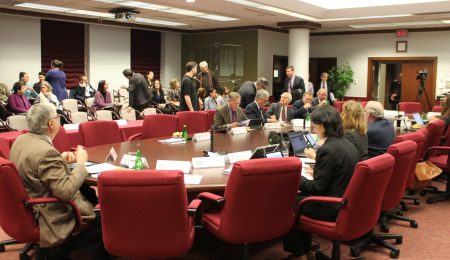“Teachers never pay attention to you when you’re online,” said one U of O student
For the 2021-22 academic year, the University of Ottawa is offering a large portion of its courses using the hybrid/bimodal teaching model. Also known as blended learning courses, this model combines two distinct real-time (synchronous) teaching spaces. The first component of the course can be accessed remotely using videoconferencing technology, while a second component of the same course can be found on-site in the classroom.
In theory, professors are supposed to plan and adapt their courses to make sure students who are in both learning spheres get the same level of attention and education. Nevertheless, this has not always been the case and the university has taken its fair share of flak from both students and professors.
“In a seminar … you need to have the participation of students and you really have the course driven by the students and their interests and their thoughts,” said professor Ari Gandsman, who teaches in the U of O’s faculty of social sciences. “The rooms are simply not equipped in terms of the microphones for students who are virtual to hear students who are in the classroom itself.”
This has led many students who attend bimodal/hybrid courses via videoconferencing to feel ignored or less prioritized by professors vis-a-vis their peers who are in the classroom.
“Teachers never pay attention to you when you’re online,” wrote Erica Donnan, in a message to the Fulcrum.
“You never [want] the students who are virtual only to feel like they’re second-class citizens in the class,” Gandsman explained in an interview. “If you’re directing your attention [to only] in-person [students], virtual students can feel very easily neglected.”
Gandsman further attributed this problem to technical difficulties associated with biomodal/hybrid learning. The professor says that in all four of his classes he’s had issues with malfunctioning microphones. He said to engage students who were online, he needed to pass a tiny clip-on microphone around. Due to COVID-19 precautions, this was a challenge in terms of hygiene and social distancing. The professor has been taken aback by the university’s lack of essential equipment in classrooms for bimodal/hybrid learning.
“My first seminar took almost an hour to set up because my microphone wasn’t working,” said Gandsman. “And because the techs were obviously overwhelmed because of the first day of class, it took a long time to get someone out there.”
To remedy the technical issues he had with the school’s provided microphones, Gandsman bought a Bluetooth conference speakerphone. It cost him $150 out of his own pocket.
Contrary to Gandsman, professor Alain St-Amant, who teaches in the faculty of sciences, says he has had a positive experience with bimodal/hybrid learning.
St-Amant is well aware of the technical difficulties a professor might face without previous bimodal teaching experience, so he practiced in front of a fake audience during the summer to be ready for the first day of class.
“I practiced a few times. I [would] go to Marion auditorium, [start] a [recorded] Zoom session, basically pretend there were people in the audience, pretend there were people listening,” he wrote to the Fulcrum in an email.
St-Amant, who is also the faculty’s vice dean, believes that without the practice he potentially could have had problems on his first day of class. He also partakes in interactive questions, for which he uses a software called Wooclap. He did not mention having any problems with the software, or in getting online students involved in interactive activities.
As for the support he’s received from the university, he says the Teaching and Learning Support Service (TLSS) has a “Monitor Room” in Morisset where technicians are able to respond and immediately solve professors’ issues when they dial a hotline.
Both Gandsman and St-Amant spoke about receiving training from TLSS via webinars prior to the first day of classes. However, Gandsman told the Fulcrum that his questions concerning the microphone set-up and professors visiting their classrooms were disregarded.
When asked why the University chose to go the bimodal route instead of keeping online and in-person courses separate, St-Amant said this was simply not possible.
“For every class we give, we’d have to give it in French, in English, online [and] in-person,” explained St-Amant. “We just wouldn’t be able to do that.”
While the university will always be an institution where courses are taught primarily on-site, the vice-dean says in the future students can expect online, and bimodal offerings to best meet their diverse needs and realities. In short, bimodal/hybrid courses are here for the long run.





